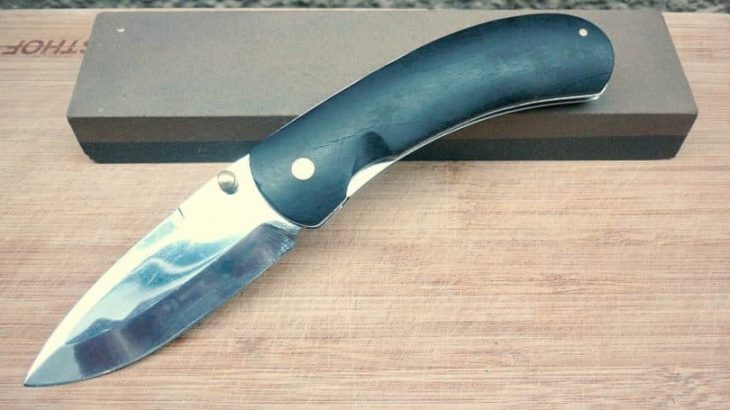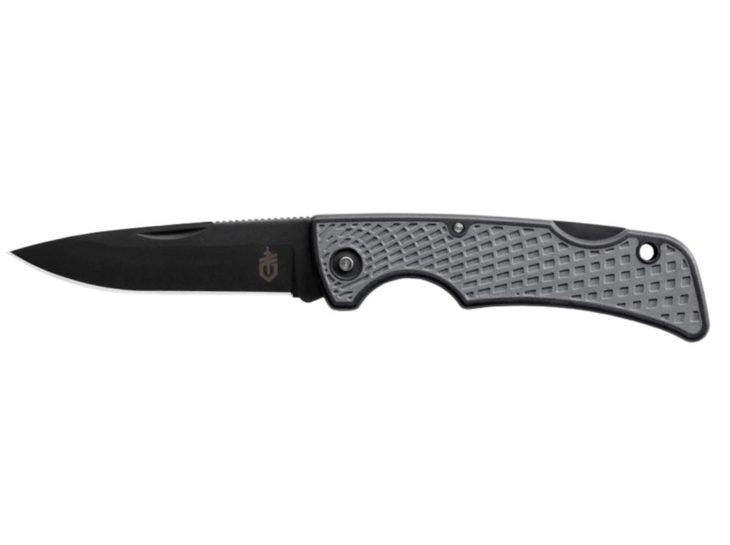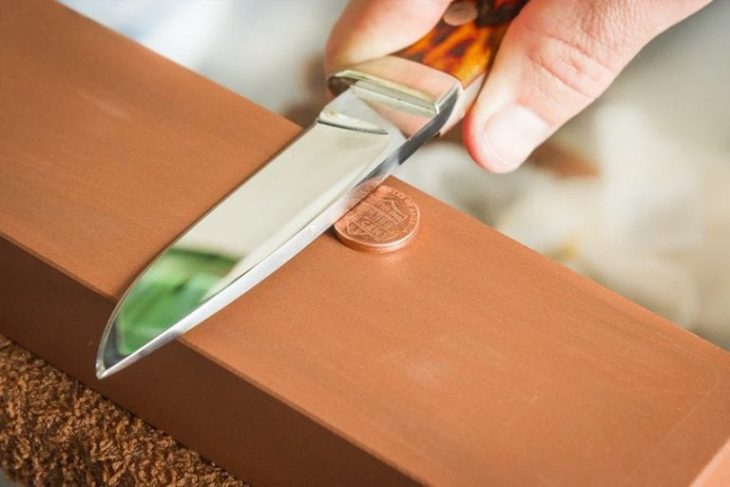Pocket knives are handy tools that you will find in almost every man’s pocket. They are great for people who are into hunting and other outdoor activities. Pocket knives are easily accessible, and this makes them useful in different activities. They can be used to carve wood, open food packages and cutting boxes among other uses.
Considering all these functions, there is nothing good that you can do with a dull pocket knife. Many people have been asking the best method to sharpen a pocket knife, and I found it right to give you this guide so that you can do it right.
Before we get started, I would like to say that there are different methods that many people use to sharpen a pocket knife. It all depends on your preference. After all, in the end, we all want to have a sharp pocket knife.

Source: Hiking Mastery
How Can I Test Dullness?
Using a sharp knife is way safer than a dull knife. Not to mention the little effort you will use when cutting with a sharp knife. There are several ways in which you can test for a dull edge. If you notice that working with the knife is becoming harder, this can be an indication of a dull blade.
Another method you can use to test for a dull blade is to point the edge of the knife on bright light from the sun or headlamp. If the edge of the knife reflects light, then this is an indication of a dull blade.
Lastly, you can use the thumbnail test. If you touch the sharp end of the knife with your nail, you will notice that a blunt blade will slide with ease.

Source: Gerber Gear
Methods of Sharpening a Pocket Knife
I will take you through two best methods that you can use to sharpen your pocket knife.
Method 1: Using a Sharpening Stone
According to experts from donaskitchen.com, this is probably the most common method that many people use to sharpen pocket knives. There are different types of sharpening stones that you can use depending on the one that you love. Regardless of the type of stone that you use, you should make sure that your stone is 2×6 inches so that you can make your work easier. The following are the most common types of stones that you can use:
Whetstone- They are made from fine to coarse grit and the easiest to use. Before you sharpen your knife, make sure that you deep the Whetstone in clean and cold water.
Ceramic stones-These stones also need to be soaked in water before you sharpen. They are pretty hard as compared to whetstones they make sharpening faster. They are also durable as compared to whetstones.
Diamond stones-These stones come in different varieties from fine, hard to superfine. These stones are hard and porous. They are the hardest sharpening stones and make sharping blades quick.

Source: Solutions
- Lubrication
After selecting the right stone, the next thing that you need to do is to lubricate the stone. For ceramic and whetstone, you need to soak the stone in water for about 5 minutes. For other stones, you can buy mineral oil for lubrication. Why do you need to lubricate? The main reason why you need to lubricate the stone before sharpening is to prevent clogging the pores of the stone from clogging up with grit.
Additionally, lubrication reduces the heat that is caused by friction when sharpening the knife.
- Identify the Rough Grind Angle
You need to identify the bevel angle of the blade, and for most pocket knives, it is between 25-30 degrees. If you do not know how to identify the right angle, you can seek help in your local shop or online.
- Positioning the Knife
Position your pocket knife at the right angle on the sharpening stone. The blade should face away from you at the right bevel angle. Hold your knife in the same position for some time if you are sharpening for the first time. You might find this challenging, but when you get used, it is simple.
Glide your knife along the stone swiping it down and off the sharpening stone. Repeat this process several times until you get a sharp edge. In most cases, up to 12 times will be great. If you have a curved blade or a blade that is longer than the sharpening stone, sweep it down and across the stone to sharpen it completely.
Flip your knife over to sharpen the other side. You can do this up to 8 times until you get a sharp edge.
- Flip the Stone Over
Make sure that the finer side is facing up. Put the blade at the right bevel angle on the fine side of the stone. This ensures that there are no bumps that might have formed on the sharp edge. You can now test your knife for sharpness.
Method 2: Using a Honing Rod
These rods are also referred to ad sharpening steel, and they also work well in sharpening pocket knives. Hold the rod using its handle and make sure you hold it straight up and down so that it is vertical. Find the right bevel angle and swipe the knife along the rod. Turn your knife and do the same on the other side. If you have a dull knife, then you need to swipe several times. But if it is sharp, just swipe it a couple of times, and you are done. Check more resource about knife here.
Final Words
Using a sharp knife is safer as compared to a dull knife. It is easier to cut things with a sharp knife because you don’t have to use more energy. I have covered two best ways in which you can use to sharpen your pocket knife. I have included every detail that you would love to know about sharpening pocket knives to make your work easier. Depending on the method that you choose, then you can be sure of having a sharp edge all the time.
